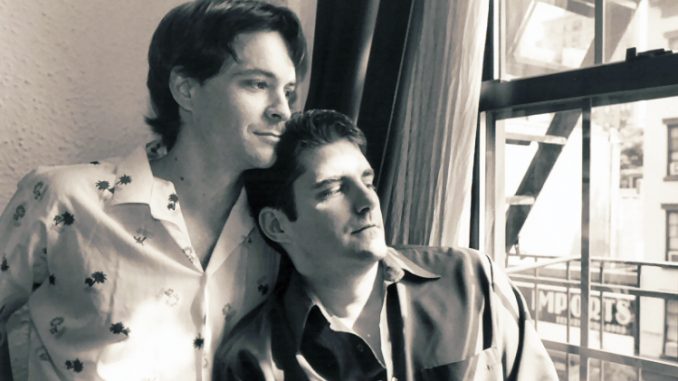In September of 2002, a unique and knowing play premiered at The Bank Street Theatre. Structured in three acts, it follows the lives of two boys who meet in New York City on the night of the Stonewall riots and chronicles the men they become over the next three decades. Starting on June 28, 1969, Chuck Blasius’ script follows Douglas and Jean over the course of a 30-year relationship from the beginnings of the gay rights movement, through the age of AIDS, to the Matthew Shepard Vigil on October 19, 1998.
“Personal and intense…Blasius’ delineation of his characters is terrific. The portraits of Douglas and Jean are very finely drawn, and as played by Robert Gomes and Ken Mason they are attractive, endearing, and beautifully flawed human beings.”
— Off-Off-Broadway Review
My job was to compose nothing, but instead transport the audience in time using 7 audio collages, carefully edited to a final total of about 17 minutes. Created from clips of period vocal recordings (mostly pop, rock, folk and R&B), these scene transitions would establish the passing of five-year intervals. Some segments had to be tailored in length for wig and costume changes as well. All that seemed easy enough until, encouraged by the director, I began to manipulate a narrative thread in this audio gallery that would evolve and comment on itself as well as the play.

The cast list of We Were There consists of two actors. But in fact there were eight performers. After sorting through lists of singers and hundreds of recordings, I soon settled on five artists to follow over a 30-year journey, tracking their changing sounds and tastes. They were Bob Dylan, Aretha Franklin, Barbra Streisand, The Rolling Stones and Stevie Nicks. And for good measure, an onstage radio, when on, was tuned permanently to a Dionne Warwick-only frequency.
I’m not a fan of the use of established dramatic material, music or otherwise, in original plays and musicals. Richard Rodger’s “nothing old in something new” advice usually holds true for me. But in this landscape, especially without visuals, it seemed critical. These fragments of now out-of-time but still-in-touch recordings were like the bracelet that holds the charms.
We Were There was and is an important work, designed with passion and dedicated to heart-breaking memory. Nightly, audience members who had lived through those years would stay in their seats for some time after, lost in the spell of Stevie Nicks’ I Miss You, not wanting to leave the theater.
A rare and grand experience, if you were there.
Playbill: From Stonewall to Shepard
Playbill: Charting a Couple from Stonewall and On
NYT: The Night the Stonewall Inn Became a Proud Shrine
NYT: 96 Arrested During Rally Protesting Gay Man’s Killing in Wyoming
